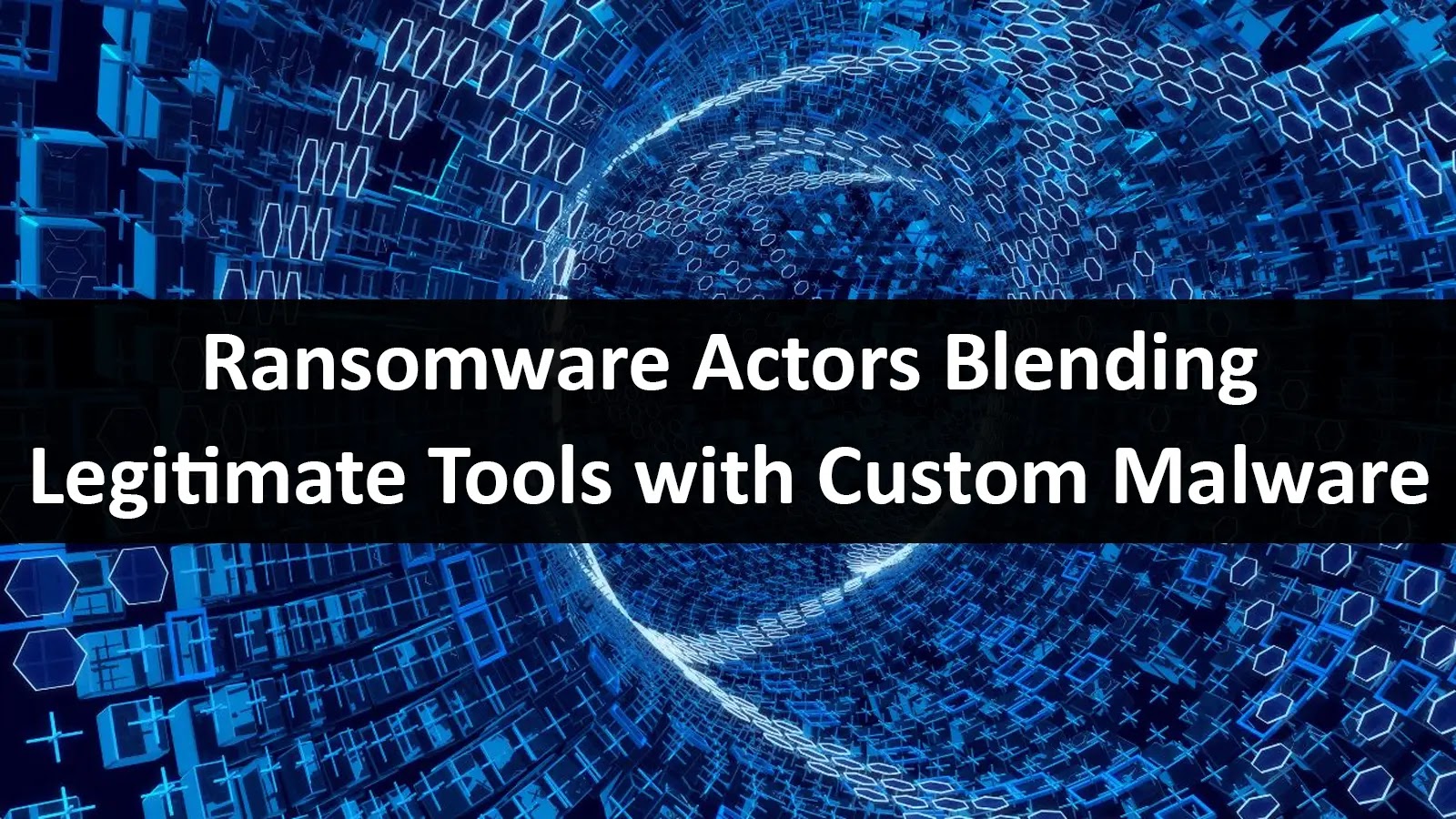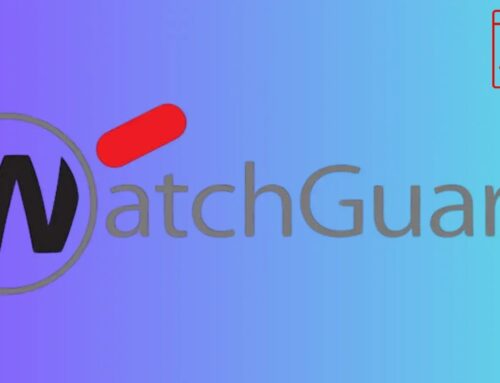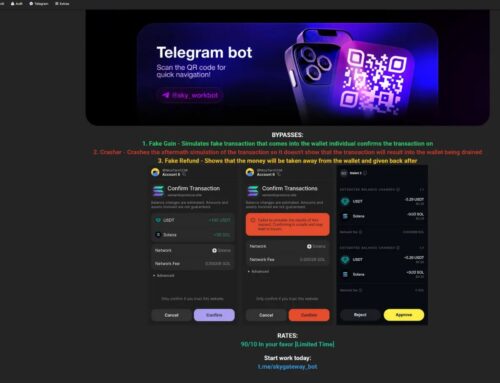
Ransomware Actors Blending Legitimate Tools with Custom Malware to Evade Detection
Ransomware’s New Frontier: The Perilous Blend of Legitimate Tools and Custom Malware
The cybersecurity landscape faces a sophisticated and alarming evolution in ransomware attack methodology. Gone are the days when ransomware operations relied solely on easily identifiable custom-built malware. Today, we are witnessing a dangerous convergence: threat actors seamlessly blending legitimate administrative tools with their custom-developed malicious payloads. This insidious strategy, exemplified by the emerging Crypto24 ransomware group, allows them to execute precision strikes against high-value targets while expertly evading traditional detection mechanisms.
The Crypto24 group, in particular, has demonstrated an alarming success rate, compromising organizations across Asia, Europe, and the United States. Their focus on blending legitimate tools for critical stages of their attack chain, coupled with their bespoke ransomware, presents a significant challenge for defenders. This post will dissect this evolving threat, explore the “living off the land” tactics employed, and outline crucial remediation actions to fortify your defenses against such sophisticated incursions.
The Crypto24 Modus Operandi: Blending In to Break Out
The primary innovation driving Crypto24’s success lies in their strategic use of “living off the land” techniques. Instead of deploying entirely unique tools that might flag security systems, they leverage applications and functionalities inherent to the target environment. This includes common system administration tools, network utilities, and even widely adopted third-party software that are routinely used by legitimate IT personnel. By doing so, their initial reconnaissance, lateral movement, and even some stages of data exfiltration or encryption preparation can mimic legitimate network activity, making detection incredibly difficult.
Once established, the custom-developed ransomware component is then deployed to execute the final payload – encryption and extortion. This two-pronged approach allows them to:
- Evade Detection: Security Operation Centers (SOCs) often struggle to differentiate between legitimate administrative actions and malicious activity when the same tools are being used. Heuristic and signature-based detections are less effective against this tactic.
- Reduce Attack Footprint: By leveraging existing tools, the attackers reduce the amount of new, potentially suspicious code they need to introduce into a system.
- Increase Persistence: Legitimate tools are less likely to be removed or flagged by system administrators, aiding in maintaining access.
The “Living Off The Land” Advantage
The concept of “Living Off The Land” (LOTL) is not new, but its sophisticated application by ransomware groups like Crypto24 elevates its danger. Instead of bringing their own extensive toolkit, attackers rely on what’s already available. This often includes:
- PowerShell: A powerful scripting language and command-line shell that can be used for system administration, network configuration, and malicious activities such as reconnaissance, command and control, and even payload delivery.
- PsExec: A legitimate sysinternals tool for executing processes on remote systems, often abused for lateral movement.
- Windows Management Instrumentation (WMI): A core component of Windows for managing devices and applications, frequently exploited for persistence, lateral movement, and data exfiltration.
- RDP (Remote Desktop Protocol): Often used legitimately for remote administration, but compromised RDP credentials are a common initial access vector and lateral movement pivot point for ransomware groups.
- Network enumeration tools: Standard commands like
netstat,ipconfig,ping, and legitimate network scanners can be used for internal reconnaissance.
While the specific CVEs associated with the Crypto24 group’s exploitation of legitimate tools are not universally tracked in the same way as software vulnerabilities, their success often hinges on inadequate patching of known vulnerabilities that allow initial access or privilege escalation (e.g., CVEs related to unpatched RDP vulnerabilities like CVE-2019-0708, or broader system misconfigurations that facilitate the abuse of legitimate tools).
Remediation Actions: Fortifying Defenses Against Blended Threats
Defending against ransomware groups that blend legitimate tools with custom malware requires a multi-layered, proactive approach. Traditional perimeter defenses are insufficient. Organizations must focus on internal network visibility, endpoint detection, and robust incident response capabilities.
- Enhanced Endpoint Detection and Response (EDR): Invest in EDR solutions that not only detect known malware but also analyze behavioral anomalies. An EDR should be capable of flagging unusual execution of legitimate tools, such as PowerShell scripts running from unexpected locations or WMI queries with suspicious parameters.
- Privilege Access Management (PAM): Implement strict PAM policies. Limit administrative privileges to only what is necessary, enforce Least Privilege principles, and utilize Just-in-Time (JIT) access for sensitive tasks. Rotate and secure administrator credentials rigorously.
- Network Segmentation: Isolate critical assets and sensitive data through network segmentation. This limits the lateral movement capabilities of attackers, even if they manage to compromise an initial endpoint.
- Multi-Factor Authentication (MFA): Mandate MFA for all remote access services, internal applications, and privileged accounts. This significantly reduces the risk of credential theft leading to system compromise.
- Strict Software Whitelisting/Application Control: Implement white-listing policies to allow only approved applications and scripts to run. This can mitigate the execution of both custom malware and the malicious use of even legitimate tools if their typical behavior deviates from policy.
- Behavioral Analytics and Threat Hunting: Proactively hunt for suspicious activities using behavioral analytics platforms. Look for patterns such as unusual user logins, abnormal data transfer volumes, or legitimate tools being used in sequences that suggest malicious intent. For example, a non-IT user account executing PowerShell scripts to query active directory and then attempting to remotely execute processes.
- Regular Backups and Disaster Recovery: Maintain immutable, offline backups of all critical data. Regularly test your data recovery plan to ensure business continuity in the event of a successful ransomware attack.
- Employee Training and Awareness: Educate employees about phishing, social engineering, and the importance of reporting suspicious activities. Many attacks begin with human error.
- Vulnerability Management and Patching: Continuously identify and remediate vulnerabilities in your systems. While LOTL attacks reuse legitimate tools, initial access often exploits unpatched software or insecure configurations. Regularly scan for and patch common vulnerabilities (e.g., those listed in CISA KEV catalog).
Essential Security Tools for Detection and Mitigation
Implementing the above remediation actions often involves leveraging a suite of cybersecurity tools. Here’s a brief overview of relevant tool categories:
| Tool Category | Purpose | Examples/Key Features |
|---|---|---|
| Endpoint Detection & Response (EDR) | Detect and investigate suspicious activities on endpoints, including behavioral analysis of legitimate tools. | CrowdStrike Falcon, SentinelOne, Microsoft Defender for Endpoint |
| Security Information & Event Management (SIEM) | Centralized logging and analysis of security events across the IT infrastructure for threat detection. | Splunk, IBM QRadar, Microsoft Azure Sentinel |
| Behavioral Analytics/UEBA | Identify anomalous user and entity behavior that may indicate a compromise. | Exabeam, Rapid7 InsightIDR |
| Privileged Access Management (PAM) | Secure, manage, and monitor privileged accounts and access. | CyberArk, BeyondTrust, Thycotic Secret Server |
| Application Control/Whitelisting | Restrict which applications are allowed to run on endpoints. | AppLocker (Windows), Carbon Black App Control |
| Network Access Control (NAC) | Enforce security policies on devices attempting to access the network. | Cisco ISE, Forescout CounterACT |
Conclusion: Adapting to A Nimble Adversary
The Crypto24 ransomware group’s tactic of blending legitimate tools with custom malware marks a critical shift in the cyber threat landscape. It underscores the necessity for organizations to move beyond signature-based detection and embrace holistic cybersecurity strategies centered on behavioral analysis, least privilege, and robust incident response. Understanding how adversaries “live off the land” is paramount to detecting their presence and containing their impact. By implementing advanced EDR solutions, strong PAM, network segmentation, and continuous threat hunting, organizations can build resilience against these increasingly sophisticated and elusive ransomware operations, safeguarding their critical assets from devastating attacks.





